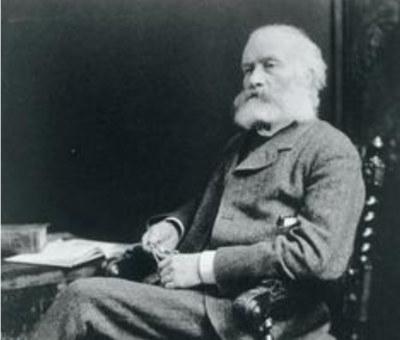 By Katelyn Goodwin
By Katelyn Goodwin
November 4th, 2022
BURLINGTON, ON
Our daylight-saving time ends this coming Sunday on November 6th at 2:00 AM when the clocks are turned back one hour.
There is a phrase that people use to remember which way the time is changed. Spring forward, fall back. I have not always remembered that phrase.

Sir Sanford Fleming,
Changing of the clocks has been a practised in Canada for more than a hundred years, yet many do not know the reason as to why we do it. I was one of those people until very recently. So why do we do it? Today, it’s mostly to benefit the environment by saving energy, making better use of daylight, and reduce traffic accidents by providing more daylight during times of high traffic during rush hour but there’s a bit more too it than that.
‘What do you mean?’ you may ask. The answer can be traced back to Sir Sanford Fleming, who is known as the ‘Father of Standard Time’. Fleming was a Scottish Canadian civil engineer who founded the Royal Canadian Institute in Toronto. He lived from 1827 to 1915 and mainly worked as a railway engineer for the Canadian Pacific Railway.
Ironically, the creation of our current standard time system, as well as hourly variations according to established time zones was inspired by Fleming after he missed a train in Ireland due to confusion over time of departure. I suppose it goes to show that not even somebody who lived and breathed trains was perfect when it came to knowing exactly when to be on time.
He first advocated for the adoption of the current time system to the Royal Canadian Institute in 1879. In 1884 he convened the International Prime Meridian Conference in Washington at which the system of international standard time in use today was officially adopted.
The modern standard time system with the changing of the clocks established by Fleming is still an issue. Some parts of Canada don’t use Daylight Savings time. They are: Yukon, most of Saskatchewan, some locations in Québec east of 63° westerly longitude (e.g. Blanc-Sablon), Southampton Island, and some areas in British Columbia don’t use DST and stay on standard time all year.
How people in those parts of the country get to the train on time is something I just don’t know.
And to think it all stemmed from a railway engineer missing a train. Now why can’t my time related inconveniences have such an effect?

Donald Alexander Smith (Lord Strathcona) driving the last spike of the Canadian Pacific Railway at Craigellachie, British Columbia, on November 7, 1885, with Fleming standing behind him (photo: Wikipedia)














